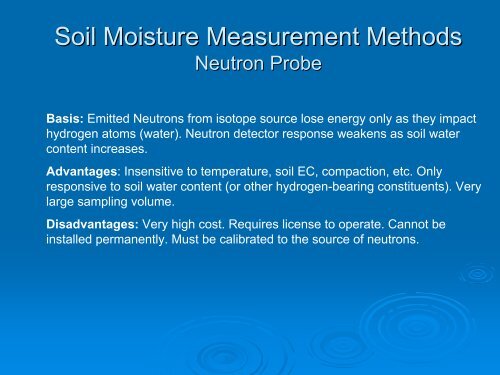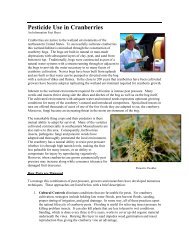Soil Moisture Measurement Methods Neutron Probe
Soil Moisture Measurement Methods Neutron Probe
Soil Moisture Measurement Methods Neutron Probe
Create successful ePaper yourself
Turn your PDF publications into a flip-book with our unique Google optimized e-Paper software.
<strong>Soil</strong> <strong>Moisture</strong> <strong>Measurement</strong> <strong>Methods</strong><br />
<strong>Neutron</strong> <strong>Probe</strong><br />
Basis: Emitted <strong>Neutron</strong>s from isotope source lose energy only as they impact<br />
hydrogen atoms (water). <strong>Neutron</strong> detector response weakens as soil water<br />
content increases.<br />
Advantages: Insensitive to temperature, soil EC, compaction, etc. Only<br />
responsive to soil water content (or other hydrogen-bearing constituents). Very<br />
large sampling volume.<br />
Disadvantages: Very high cost. Requires license to operate. Cannot be<br />
installed permanently. Must be calibrated to the source of neutrons.










